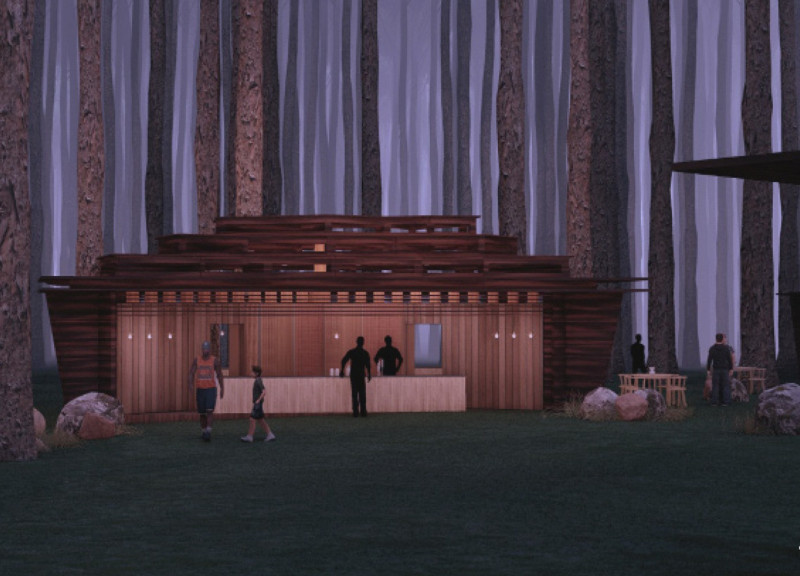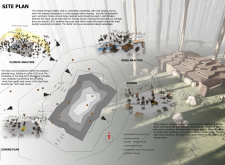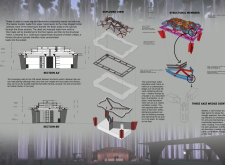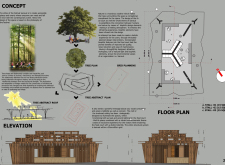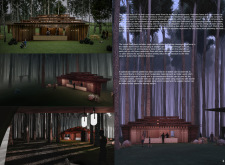5 key facts about this project
Located in the Baltic city of Riga, the design addresses the region's moderate continental climate. It functions as a food court, complemented by three caterer workspaces and designated eating areas for visitors. The design concept emphasizes community engagement and a connection to nature, leveraging abundant natural light and facilitating cross ventilation throughout the space.
Structural Framework
The framework features timber construction, utilizing beams and columns to efficiently transfer loads from upper layers to the support system below. This setup minimizes concentrated forces on the foundation, ensuring structural stability. The combination of these elements supports the overall integrity of the design and aligns with sustainable building practices.
Environmental Considerations
The layout is oriented to capture prevailing winds from the southwest, promoting natural airflow and enhancing user comfort. Two existing trees on the site contribute to a welcoming atmosphere, deepening the connection to the natural environment. Non-load-bearing infill panels are placed between the structural framework, allowing flexibility in interior arrangement while meeting thermal, acoustic, and fire safety requirements.
Aesthetic Elements
A decorative mesh frame made of metal is a notable architectural feature, blending traditional design with modern aesthetics. This frame serves as both protection and a natural ventilation system, allowing light to create playful patterns inside the food court. This detail enriches the visual experience while keeping functionality in mind, leading to an approach that values both form and practicality.
Interior Experience
The planning of interior spaces encourages interaction and easy movement among users. Natural light floods the food court, making it lively and inviting. Evidence of biophilic design principles emerges as communal areas support socialization, with features that enhance air quality and minimize noise. The architectural composition ultimately results in an environment that is both practical and welcoming.


